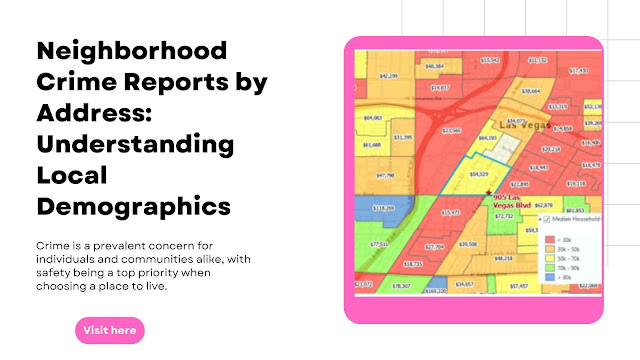Neighborhood Crime Reports by Address: Understanding Local Demographics
Crime is a prevalent concern for individuals and communities alike, with safety being a top priority when choosing a place to live.
To make informed decisions about neighborhood safety, it is essential to consider crime reports by address. By analyzing these reports, individuals can gain insights into the crime trends and demographics of a particular area. This blog aims to shed light on the significance of neighborhood crime reports and how they can help shape decisions regarding residential choices.
Understanding Crime Reports: Crime reports by address provide valuable information about the incidence and types of crimes committed within a specific area. They typically include data on various offenses such as theft, burglary, assault, vandalism, and more. By examining these reports, one can identify crime hotspots, trends, and patterns that can assist in assessing the safety of a neighborhood.
Factors Influencing Crime Rates: When analyzing crime reports, it is crucial to consider the underlying factors that contribute to crime rates in a particular area. Socioeconomic factors, such as poverty levels, unemployment rates, and educational opportunities, can have a significant impact on crime. Neighborhoods with high poverty rates tend to have higher crime rates, as individuals may resort to criminal activities due to limited opportunities or desperation. Additionally, demographic factors, including age, gender, and population density, can influence crime rates. Areas with a higher concentration of young adults or a dense population may experience more criminal activity.
Demographic Considerations: Demographic information plays a crucial role in understanding Neighborhood crime report by address. Analyzing data such as age, income levels, educational attainment, and racial composition can provide insights into the social dynamics of a neighborhood. For instance, areas with a higher proportion of young adults may have a greater likelihood of certain types of crimes, such as drug-related offenses. Similarly, neighborhoods with lower levels of educational attainment may experience higher rates of property crime.
Making Informed Decisions: Neighborhood crime reports can be valuable tools for individuals seeking to make informed decisions about their living arrangements. By examining crime statistics, potential residents can assess the safety of an area and take the necessary precautions. However, it is essential to remember that crime reports provide a snapshot of past incidents and should not be the sole determining factor when evaluating a neighborhood. It is recommended to combine crime data with other resources, such as personal visits to the area, conversations with residents, and insights from real estate professionals.
Conclusion:
Crime reports by address offer valuable insights into the safety and security of a neighborhood. Analyzing crime statistics alongside demographic data can provide a comprehensive understanding of the social dynamics that contribute to crime rates in a particular area. By considering these reports, individuals can make informed decisions about where to live, ensuring the safety and well-being of themselves and their families. Remember, while crime reports are useful, they should be used in conjunction with other sources of information to get a holistic perspective on a neighborhood's overall environment.




Comments
Post a Comment